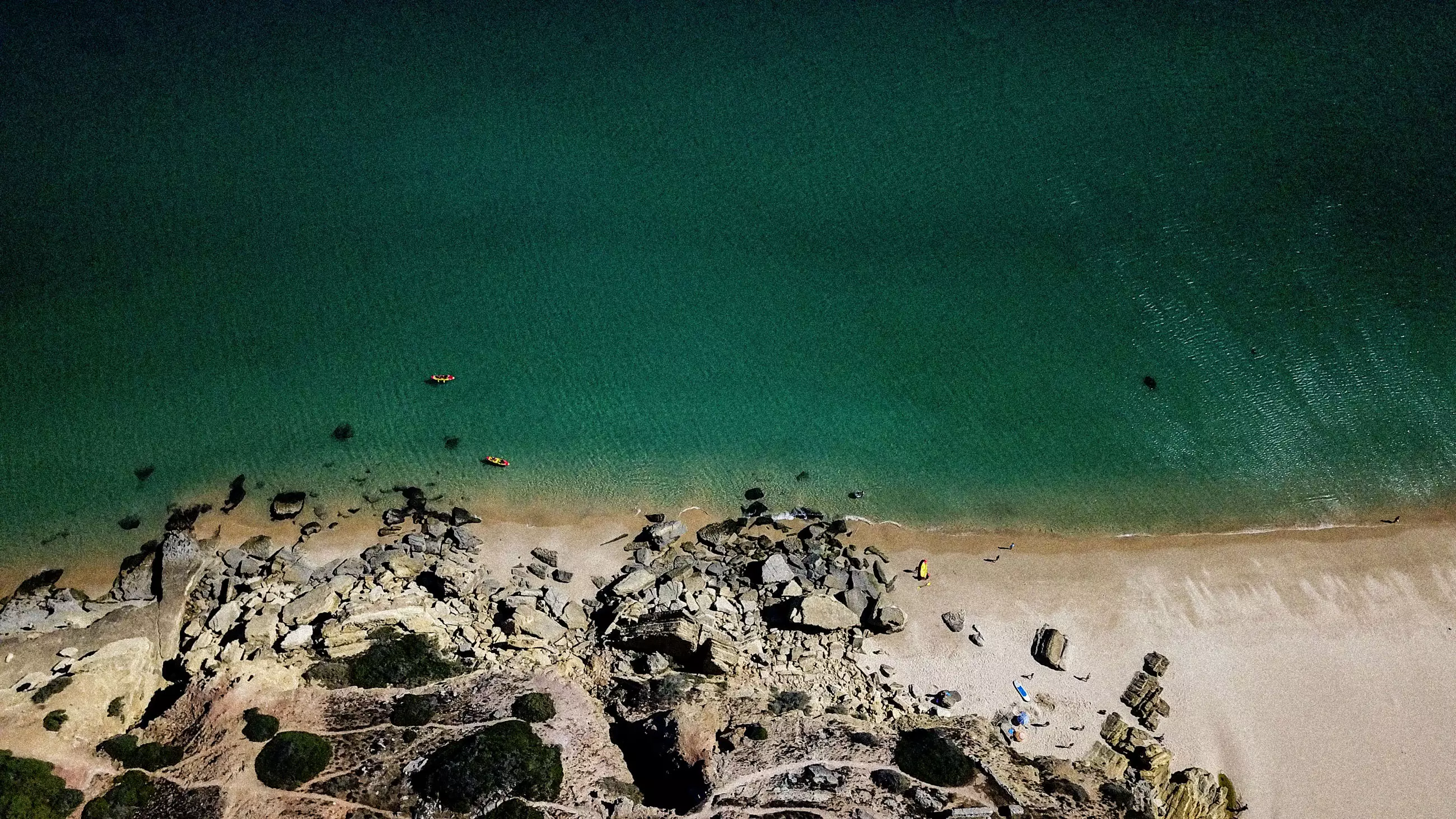
Walking with dinosaurs
The dinosaur tracks aren’t hard to find and form a trail several metres long. From their size and shape, it’s believed the footprints belonged to a type of Ornithopod, a herbivorous biped. This name comes from the Greek word meaning ‘bird-foot’ and looking at the footprints themselves, you’ll be able to make out the shape of a three-toed foot that doesn’t have claws.
From the evidence, footprints, and other signs of life, it’s reported that the shelf was originally the muddy-sand bottom of a lagoon. As a result, the footprints were well preserved in the sediment.
The Ornithopod in question is thought to be an iguanodon, a large dinosaur that could grow up to twelve metres in length and weigh over three and a half tons.
The trail suggests it was walking on its two hind legs, although it was capable of walking on all fours as well. Its arms often used for defence with a large, spiked thumb on each hand to protect it from predators. Given that it was standing, perhaps it was wading through the waters on its way to a bite to eat…
One of the best known dinosaurs, Iguanodon was a ornithopod that lived during the Cretaceous period in what is now Europe around 125 million years ago. Herbivorous, it could walk on two or four legs.
If you choose to follow his lead further and chat with locals in the nearby restaurants, they’ll tell you there are plenty more fossils to be found among the cliffs, shelves, and beaches of the coastline around Salema!
125 million years ago, Salema would have been a part of a smaller island, with much of Europe as we know it today completely underwater and the climate considerably warmer. But it is reassuring to know that even back then Salema was still a popular destination.
Today it’s perfect for kids of all ages to spend a day seeking out relics of a time where the world would have looked very different.




